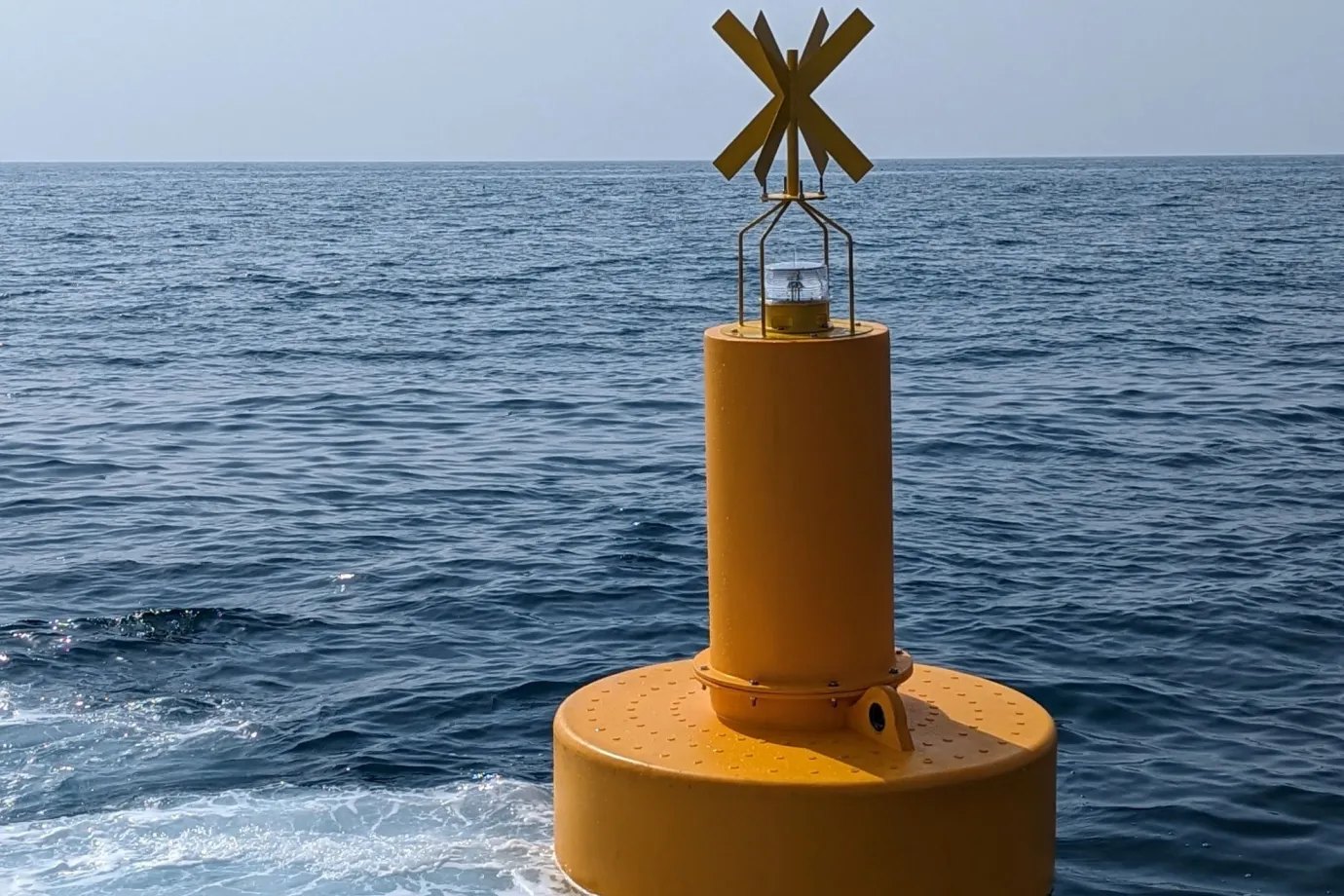The safety of rails directly affects their performance, and due to the role of railway networks in trading and transferring communications, ensuring their safety and reliability is critical. Rail welding is one of the tasks that not only ensures the safety of railway networks but also considerably enhances their performance. Based on the application, site layout, and conditions, different welding methods are used to maximize its effectiveness. In this blog post, we delve into the types of welding and the role each plays in the railway industry in detail.
Detect subsurface cracks and weld anomalies before they become failures!
Explore our precision “eddy current flaw detector” for railway inspections.

An Introduction to Rail Welding

To connect the rail segments together, there are two primary approaches: rail joints and welding rails. Rail joints, also referred to as fishplates or joint bars, is a traditional approach in which the rail segments are connected together with rail bolts or spikes. On the other hand, rail welding is a modern approach that refers to welding rail segments to create a continuous track. This is why this approach is also known as Continuous Welded Rails (CWR). Since the traditional rail joints cause some issues in railway safety and operation over time, rail welding has become an alternative solution.
See also: “Railway Infrastructure Maintenance“
By welding rails, the track lifespan is increased, and the need for maintenance is minimized. Moreover, rail welding significantly reduces rail “clack” noise, vibration, and creep, making rails more efficient and reliable than ever. However, unqualified and suitable rail welding not only causes more issues but also can intensify the previous ones and make the railways unsafe. But here is a question: how to realize that a rail welding involves the required quality? Let’s find out.
Inspecting Rail Welds and Its Importance in the Railway’s Safety

If rail welding is not performed properly or the method used is not suitable for rail conditions, it can incur potential flaws such as cracks, damage, and crashes. Various solutions are available to ensure that a rail welding method is suitable and properly performed. Visual inspection, either traditional or automatic, is one of the common non-destructive testing methods for inspecting rail welds. But this method is not reliable that much. Penetrating, radiography, and magnetic particle testing are other efficient non-destructive methods used to inspect the rail welds and ensure if they are qualified or not.
However, eddy current testing and ultrasonic testing are the most reliable nondestructive testing methods that play a significant role in rail weld inspection and identifying potential defects. Laser measurement is another non-destructive testing method used to efficiently inspect the rail weld joints. Therefore, the property and safety of tracks are ensured. Additionally, different types of rail welding provide different levels of quality based on their method and the rail materials, types, and conditions. Here are the most common rail welding methods and their benefits and challenges:
Different Types of Rail Welding

The type of rail welding depends on many factors. The application of rail welding is an influential factor in choosing the methods of rail welding. For instance, the method used in field welding (on-site welding) must be different from the one used in plant welding (factory setting). The site layout and condition, preferred weld quality, rail material, budget, and timeline are the other factors that determine the rail welding methods depends on. The most common types of rail welding are as follows:
Thermite Welding
Thermite rail welding is one of the most traditional and common methods of rail welding, which refers to generating extreme heat using a chemical reaction derived from a mixture of aluminum and iron oxide. The heat generated melts both rail ends and creates a bond using a special mold. This method is suitable for field welding and repair, especially in cases where track replacement is costly due to its cost-effectiveness, durability, and straightforwardness. However, thermite rail welding is a time-consuming process, and it will not be qualified if the operator is not expert and skilled.
Gas Pressure Welding
Gas pressure welding is another rail welding method in which the gas flame from the reaction of oxygen and acetylene (oxyacetylene) heats both ends of the rails, making them pliable. Then, the softened rails are forged by applying pressure to create a seamless bond. Gas pressure welding is suitable for field welding and requires special equipment that incurs a high cost and time-consuming process. Although it can be one of the best methods of rail welding due to creates a seamless and strong bond between two rails without using any additional filler material.
Electric Arc Welding
Electric arc welding is a versatile method that can be used in both construction and maintenance processes in the railway industry. In this method, the heat generated from an electric arc melts both the rail ends and electrode, preparing them to form and connect to each other. In addition to its application in both maintenance and construction, electric arc welding can be used for various types of rails. This method is also cost-effective and creates a high-quality weld. However, it is crucial to perform the preheat and the entire process of electric arc welding properly to avoid cracks in the weld.
Flash Butt Welding
Flash butt welding, also known as resistance welding, is a common method that uses electrical resistance to join two rail segments together. By passing a strong electric current through the gap between two rail ends, electrical resistance is generated. The heat derived from electrical resistance melts the rail ends slightly. At the correct temperature, two rail segments are pressed together, creating a bond. This method requires special equipment and skilled operators to be performed properly. Although flash butt welding is considered an efficient method with long-term durability.
Laser Welding
As an advanced method, laser welding utilizes cutting-edge technology to connect rail segments together. In this method, a high-powered laser is used to melt and bond both ends of the rails. Laser welding is an eco-friendly but expensive method that must be performed by expert operators to create smooth and durable welds.
Which Rail Welding Method Is Better: A Comprehensive Comparison
welding is a critical process in both maintenance and construction. By creating a continuous track, welding maximizes railway safety, which directly impacts its operation. Accordingly, choosing the right rail welding method plays a vital role. Rail welding methods differ based on the condition, application, type, and material of rails. The budget considered and time-consuming are also the other primary factors that should be noted in choosing the types of rail welding. The chart below is a comprehensive comparison of different rail welding methods based on their application, welding quality, durability, cost, and required time to perform.

Conclusion
Railway safety is the priority purpose of every maintenance and construction task. welding is a critical concept that ensures the safety and reliability of railway networks. Based on the railway’s features and conditions, there are various types of welding that each offer different levels of quality and durability. Understanding the rail welding methods and their benefits and challenges can significantly help you choose the right one.
CWR creates smooth, long rails with fewer joints, so trains run quietly and the track needs less maintenance. Jointed track uses bolted fishplates that create gaps; it’s cheaper at first but noisy and prone to wear.
Flash‑butt welding makes high‑quality joints quickly but needs expensive, high‑power equipment. Gas‑pressure welding is cheaper and portable but relies on operator skill for quality. Thermite welding is lightweight and good for on‑site repairs but produces weaker joints. Electric‑arc welding can produce strong joints but requires strict procedures and is rarely used today.
Flash‑butt welding suits factory or large‑scale rail production. Thermite welding is best for quick field repairs. Gas‑pressure welding is used when power supplies are limited but time is short. Electric‑arc welding is chosen only when very high strength is needed and skilled operators are available.
Rails are manufactured in sections from about 12.5 m to 100 m. Welding these sections together creates longer lengths, which improves ride quality, reduces wear and lowers maintenance costs.




